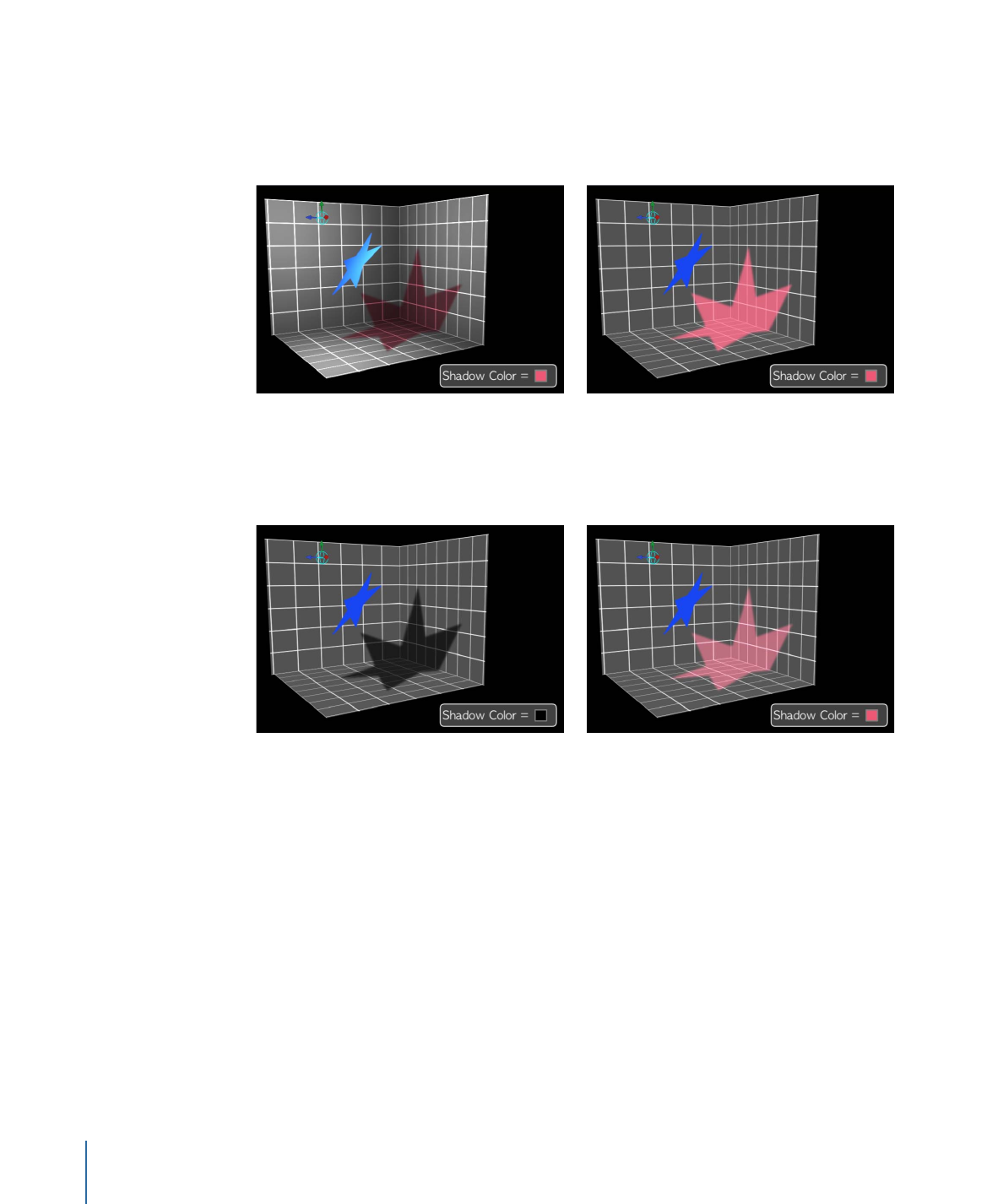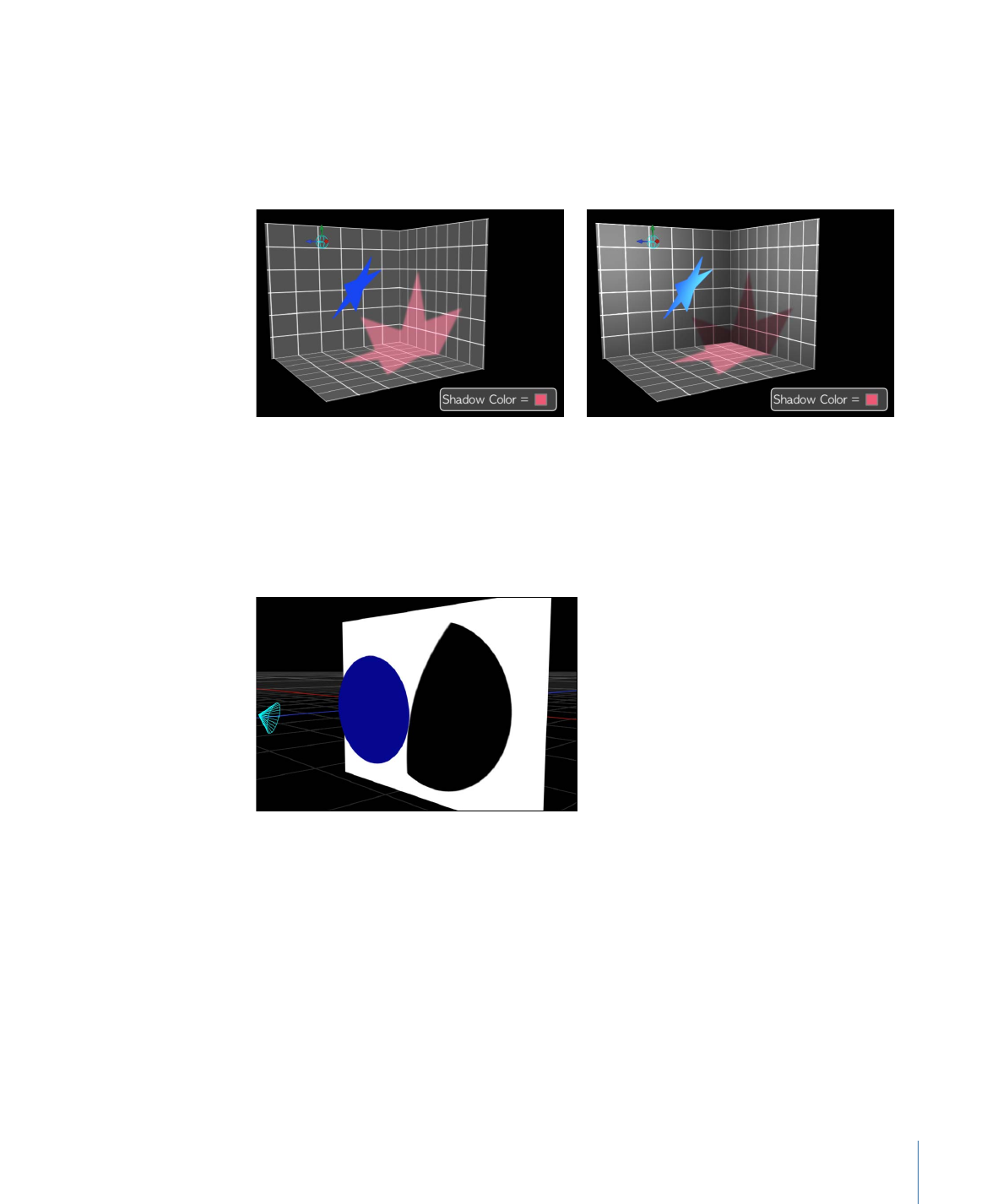
Shadows Without Lights
Lighting and shadows can each be disabled independently. You can keep shadows visible,
even when lighting is disabled, allowing you to keep the original unshaded look of the
scene. Turning off lighting also changes the way shadows are rendered.
1279
Chapter 21
3D Compositing

When Shading (the visible effect of lighting) is disabled, shadows behave differently.
Rather than being multiplied with the object upon which they are cast, the shadow’s
color and opacity are controlled only by the Shadows settings in the Light pane of the
shadow-casting light’s Inspector.
Shading enabled
Shading disabled
This enables you to create shadows of any color or opacity, from traditional dark shadows
to brightly colored or even white shadows.
1280
Chapter 21
3D Compositing

Shading can be disabled globally by choosing View > Render Options > Lighting or by
choosing Lighting in the Render pop-up menu in the status bar. (Make sure there is no
checkmark beside the menu item.) Shading can also be disabled for a specific object in
the Lighting section of an object’s Properties Inspector. For more about disabling
lighting/shading, see
Disabling Lighting
.
Shading disabled globally
Shading disabled on floor object
With spot lights, enabling shadows but disabling shading can create a seemingly strange
result where the shadow is suddenly cut off because it has exceeded the scope of the
light cone. Because the shading effect of the light cone is turned off, the shadow edge
looks unnatural.
To correct such an occurrence, increase the Cone Angle in the Light Inspector.